Trek to the Double Decker Living Root Bridge
Meghalaya, the “Abode of Clouds”, is a place full of beauty, wonder and adventure. And the trek to the Double Decker Living Root Bridge has it all and much more. Set in the hills of the rainiest place in the world, the Root Bridges are an age old method of the local people of using nature for connectivity. All you need is some strong legs, a fit body and a knack for adventure.
The Living Root Bridges are unique to Meghalaya, India and are mostly found near Cherrapunjee. Keeping with the hilly terrain, incessant rains and the restrains they face, the Khasi and Jaintia tribes have handcrafted these engineering wonders to cross over streams and waterfalls. These are human’s finest creations and they are grown meticulously over several years to achieve such a natural marvel.
A Living Root Bridge is a type of suspension bridge, handmade from the aeriel roots of rubber fig trees, taking the roots from one bank to the other, pruned and manipulated, until over time, they form the desired bridge. It generally takes 10-15 years to form a bridge, strong enough to carry 50 people at a time, and last for 500 years.
The Double Decker Living Root Bridge of Nongriat is an incredible sight – two bridges, staked one above the other, over a stream, near a small hamlet, among the lush green hills and a beautiful valley. It’s a UNESCO World Heritage Site.
“There are no short cuts to any place worth going”. This tough, day-long trek provides some splendid views and experiences along the way.
It’s a precarious, steep trek along a hiking route used by the local villagers. The trek starts with some 3000 concrete steps, and then one has to meander through tough hilly trails and cross small hamlets along the way. You meet small kids playing around and villagers going about their daily chores. Along the way you get the first feel of the wonder of the root bridges as you cross over couple of Single Root bridges. The trek takes you over metal suspension bridges until you are 2400 ft down.
“The best views come after the hardest climb.” There you have it – the stunning Double-Decker Living Root Bridge – a spectacular sight to behold.
It will take about 2 hours to reach it, or more, depending on your fitness. But the trek is really worth it. You can get refreshments in small stalls on the route, or local fruits sold by the villagers in the quaint hamlets. The trek back up is a steep one, and with the steps at the end, you really need a strong pair of legs. It should take you two and half to three hours to trek back up from the Double Root Bridge; but the green landscape, fresh air and lively villagers you meet on the way, just energises you.
Trekking in such a beautiful environment is a different experience altogether. There are many water pools nearby and a beautiful waterfall, called the Rainbow waterfall, at another hours’ trek from the Double Root Bridge. You have the option to stay in a Homestay in the villages and spend extra time in the waterfall or explore the place.
After all, it’s about experiencing it yourself. Meghalaya, and the Northeast of India as a whole, is one of the most treasured eco-friendly sites in the entire world and is one of the few places where you can feel the kick of adrenaline rush instantly with its wide array of adventure activities. I travel around these places to get replenished with its beauty.
How to Reach the trekking point of the Double Decker Living Root Bridge :
The base point of the trek starts from Tyrna village, 20 km from Cherrepunjee. Cherrapunjee is 50kms from Shillong, called the Scotland of the East, and the capital of Meghalaya state. The nearest airport is Lokpriya Gopinath Bordoloi International Airport in Guwahati, the capital of the state of Assam, at a distance of 119 km, a 3 and half hr drive. Taxi and self-driven cars and two-wheelers are available.
Best time to visit :
Cherrapunjee has a pleasant weather all year round, with max temperature in summer at 23 degree celsius, with winters having a minimum of 5 degree celsius. It has the rainiest months from April to September. The waterfalls, the landscape and the water pools are at their best during the monsoon but the route of the trek becomes a little slippery. It is a little dry in the winter months of December to February.
Stay :
From Homestays, B&B, Camping, budget hotels, resorts with traditional cottages, premium properties with spectacular views of waterfalls – you have it all in Cherrapunjee. There are basic homestays in Tyrna and Nongriat village. The places of stay in Cherrapunjee that I would recommend are Sa-I-Mika Resort, Jiva Resort, Polo Orchid Resort and the Cascade Homestay.
So, here it is. A complete guide for the trek to the Double Decker Living Root Bridge. This definitely needs to be in your Bucket List.
If you need a guide or an expert to plan your trip, the travel experts from NEICATS .. the adventure company ! (www.neicats.com) can be a good choice.

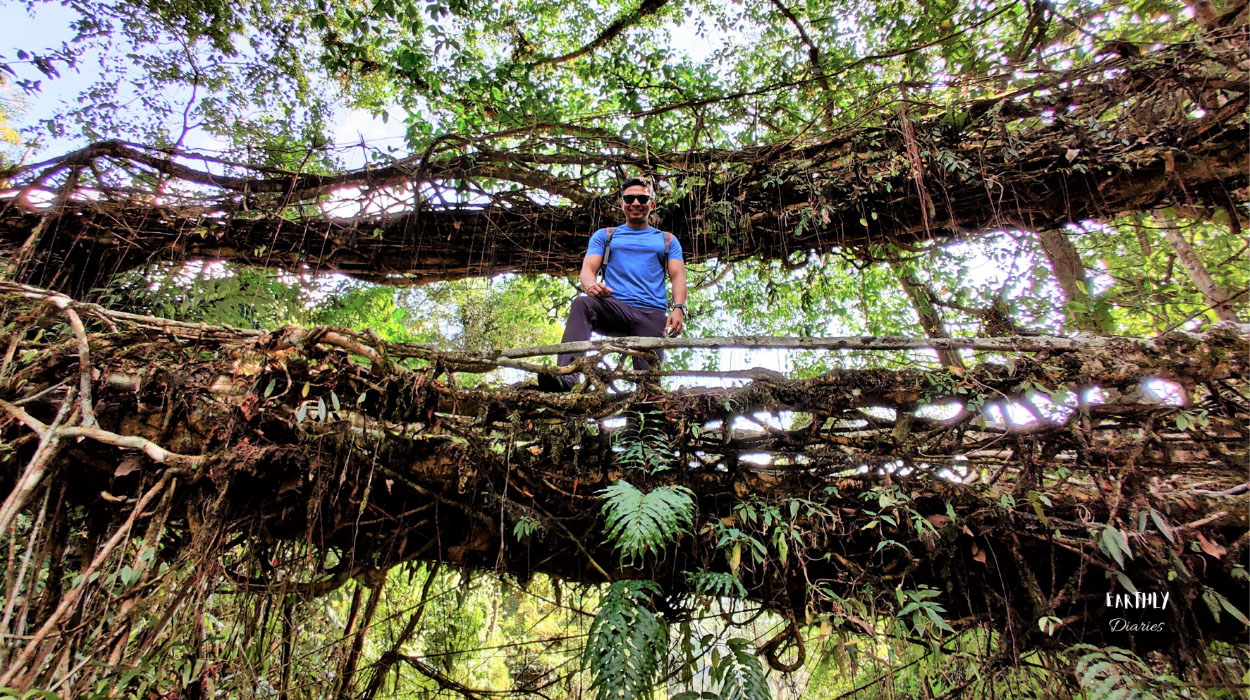


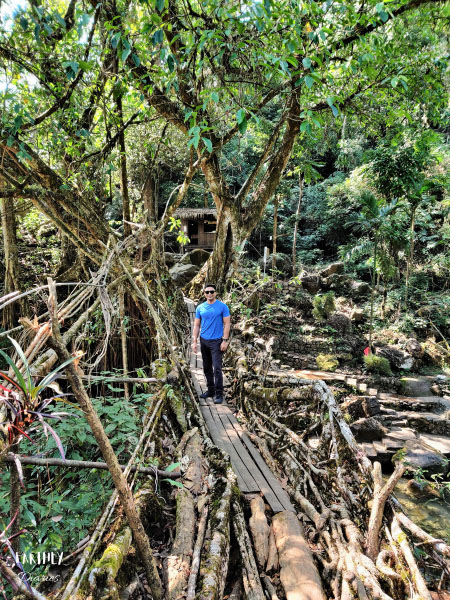
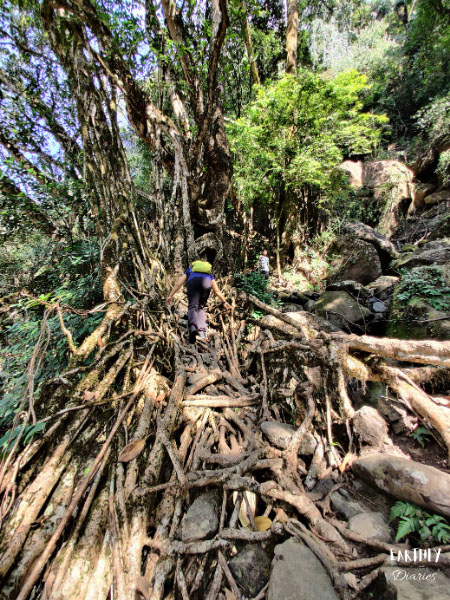
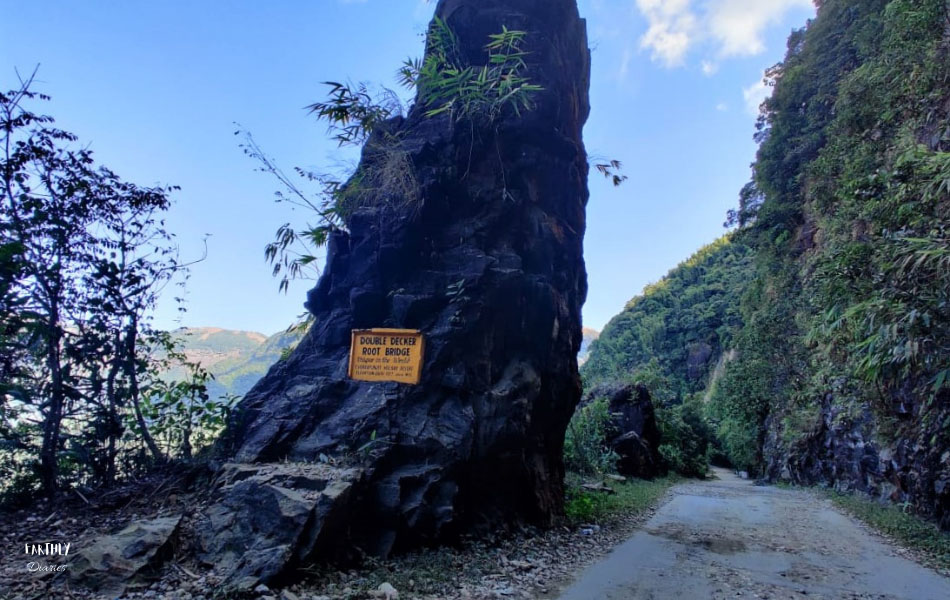

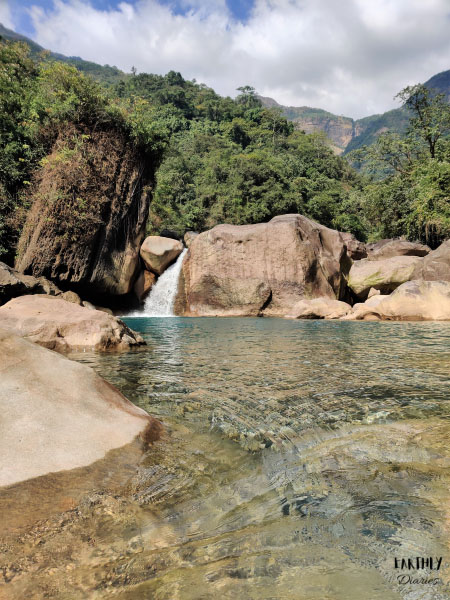

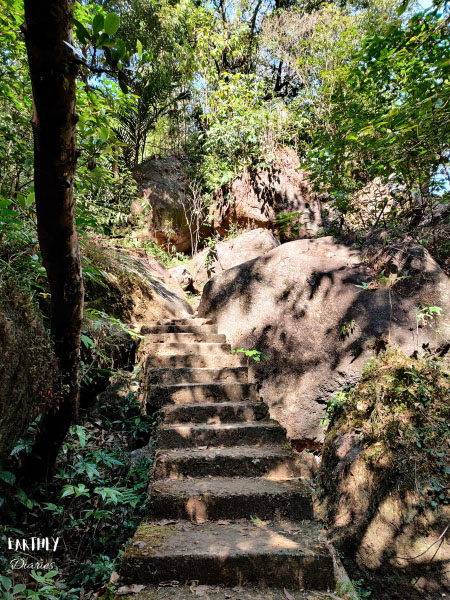

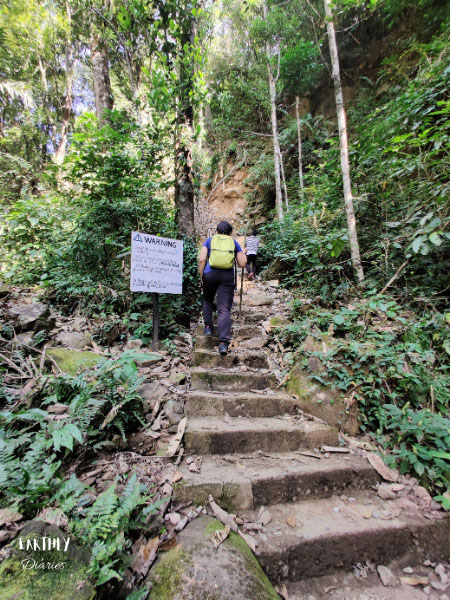
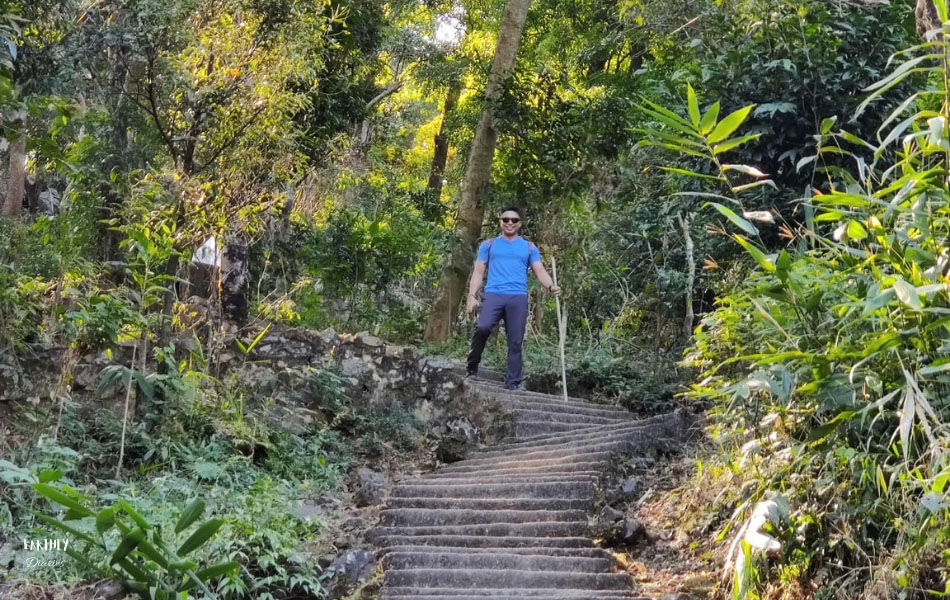
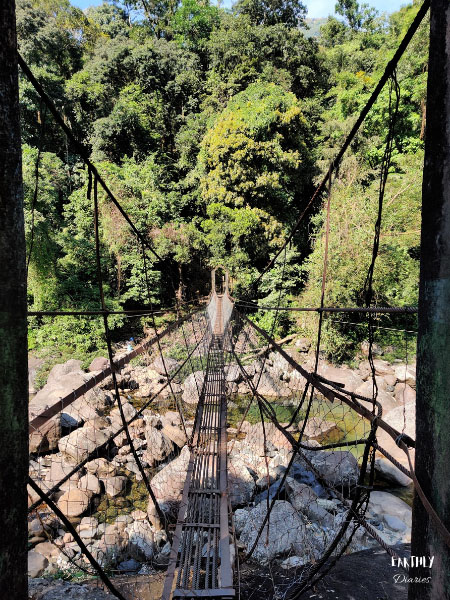
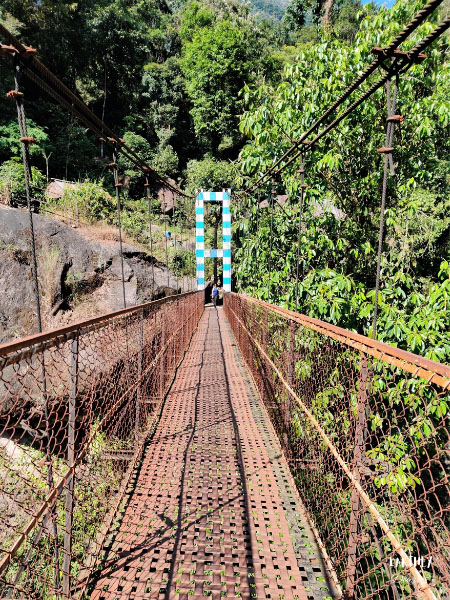


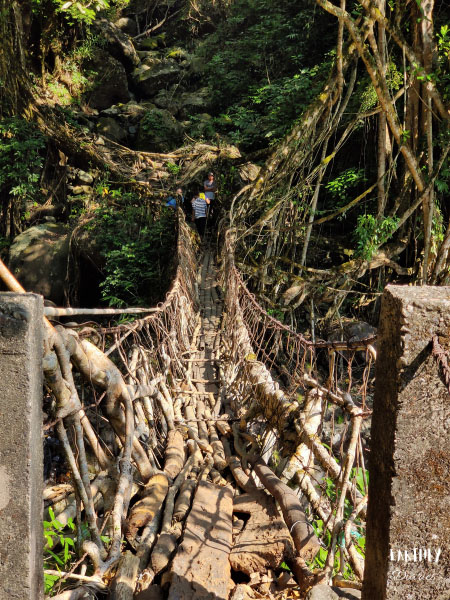




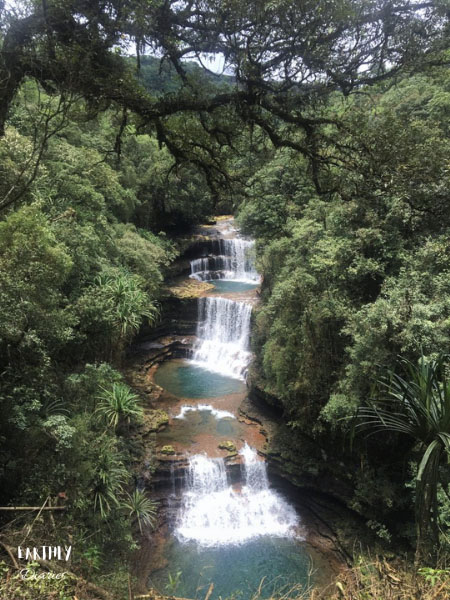





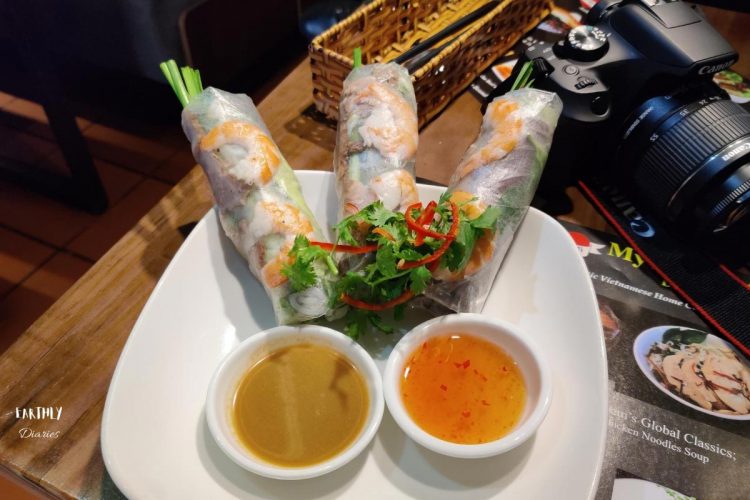
Excellent and informative.
Thank you Debojit for your appreciation.
Superb piece! Hidden treasures within our beautiful country.
Hi Neelav..thank you. Plan for it next time you are here, it’s heavenly.